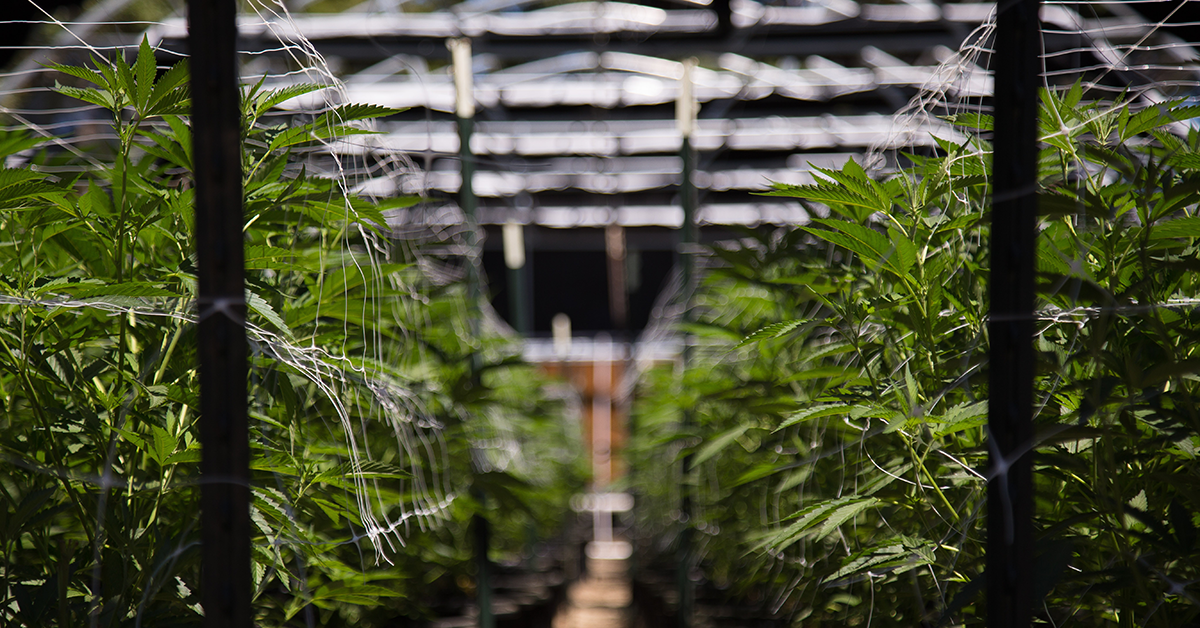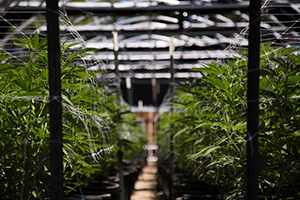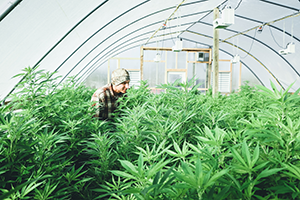Our 2025 Sustainability Report is here! Dive in.
The Surprising Impact Cannabis Growers Could Have on Utilities
September 20, 2021 •Ed McGlynn

The U.S. Senate will soon vote on whether to protect banks and credit unions from serving the cannabis industry. The passage of the SAFE Banking Act by the U.S. House of Representatives in late April is an indication that this piece of legislation has at least a chance of reaching President Biden’s desk. If it does, it will undeniably be a watershed moment, not only for cannabis growers, but for the national power sector at large.
If cannabis operators can leverage financial services without onerous regulatory and legal constraints, supply and demand will both likely rise sharply as more investors enter the industry. It’s no secret that local and state governments have already generated billions in public revenue in 2020 from cannabis sales. And, the U.S. cannabis market is projected to reach $30 billion by 2025. More municipalities and states will continue to benefit from the increased revenue to fund public services.
How Cannabis Affects Utilities
But an overlooked challenge with the legalization of adult-use cannabis during this time of exponential growth is ensuring the utility industry effectively manages its intensive energy demands. Utilities in Colorado and California faced the challenge of dealing with the emergence of clusters of cannabis grows in municipalities that allow cannabis cultivation. For example, recent analysis shows nearly 4% of Denver’s electricity demand is devoted to the cannabis industry. What happens when more states legalize adult-use cannabis production and the industry booms?

Not every state will become the next Colorado, but load growth associated with adult-use cannabis has created some short-term capacity challenges for utilities. Most of these issues coincided with the initial rush to market when clusters of indoor cannabis cultivation facilities started operations over a short period.
Utilities should take note that this burgeoning industry will present both challenges and opportunities for the power sector. It is easy enough to anticipate that where cannabis growers are operating – and plan to operate – energy demand will increase. Some regions will see this more significantly than others. But it’s not so obvious that all municipalities and utilities are ready for this. In the first states to legalize adult-use cannabis, efforts to forecast load growth associated with the industry were limited by the lack of data on facility power demand, energy use, and typical load profiles.
Cannabis and High Energy Consumption
In 2018, Morningstar declared that cannabis is one of three industries – data centers and EV charging being the two others – that will account for 6% of national electricity demand by 2030. Perhaps that’s no surprise. After all, analysis by the Southwest Energy Efficiency Project found that “energy consumption per square foot for indoor grow operations is about ten times that of a typical office building.”
 It doesn’t help that without federal standards and financial assistance, many cannabis operators are not yet adopting the best energy practices seen in well-established industries. Lack of engagement in utility programming isn’t due to a non-receptive audience, but instead the primary barrier lies in substantial upfront costs and lack of financing. The SAFE Banking Act will allow cannabis operators to leverage much-needed financial services while incentivizing utilities to design more robust cannabis program offerings.
It doesn’t help that without federal standards and financial assistance, many cannabis operators are not yet adopting the best energy practices seen in well-established industries. Lack of engagement in utility programming isn’t due to a non-receptive audience, but instead the primary barrier lies in substantial upfront costs and lack of financing. The SAFE Banking Act will allow cannabis operators to leverage much-needed financial services while incentivizing utilities to design more robust cannabis program offerings.
Still, the industry cannot go down a path unsustainably wasting energy during a time when we need companies to decrease pollution to tackle climate change. Every type of company operating within the cannabis industry has a responsibility to adopt the best renewable energy, energy efficiency, water conservation, and energy management practices. Many are, but others need support in getting there. Utilities and cleantech implementation contractors are the natural allies to helping them along this journey.
The industry can especially benefit from energy management programs that balance the grid, shave peak demand, strengthen grid reliability, and provide optimal cost savings.
Utilities will undoubtedly only see demand for these types of programs grow.
Now is the time for utilities to position themselves for the growing demand they are likely to see from the cannabis industry in the near future. With the industry staring at the prospect of the passage and signing of the SAFE Banking Act, that could be very, very soon.


